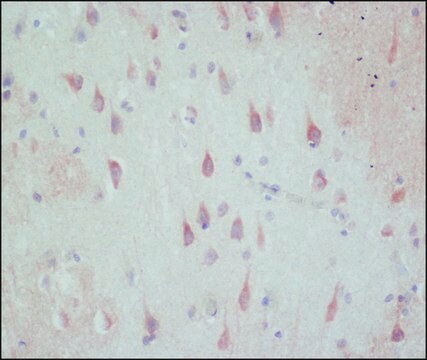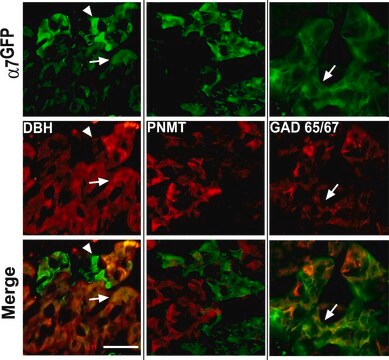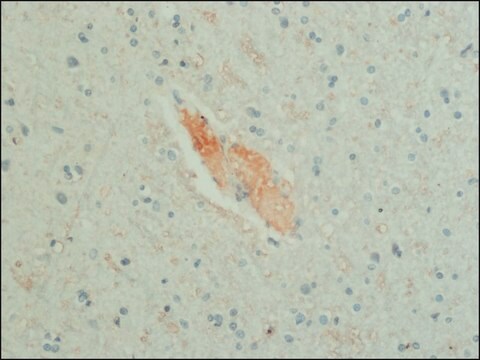G6642
Anti-Glutamate antibody produced in rabbit
whole antiserum
Synonyme(s) :
Anti-Glutamate Ab, Glutamate Detection Antibody, Rabbit Anti-Glutamate
About This Item
Produits recommandés
Source biologique
rabbit
Niveau de qualité
Conjugué
unconjugated
Forme d'anticorps
whole antiserum
Type de produit anticorps
primary antibodies
Clone
polyclonal
Contient
15 mM sodium azide
Espèces réactives
wide range
Technique(s)
dot blot: 1:15,000
Conditions d'expédition
dry ice
Température de stockage
−20°C
Modification post-traductionnelle de la cible
unmodified
Catégories apparentées
Description générale
The actions of the excitatory amino acids on neurons are mediated by different receptor subtypes. These receptors are coupled to integral ion channels or to a second messenger system which utilizes inositol triphosphate (IP3). L-glutamate and L-aspartate may play an important role in the pathogenesis of certain neurological disorders such as Huntington′s disease, Alzheimer′s disease, epilepsy and brain ischemia. The excitoxic and neurotoxic effects of L-glutamate, leading to extensive neuronal damage, appear to be mediated by the N-methyl-D-aspartate (NMDA) receptor subtype.
Spécificité
Immunogène
Application
Immunohistochemistry (1 paper)
Clause de non-responsabilité
Vous ne trouvez pas le bon produit ?
Essayez notre Outil de sélection de produits.
Code de la classe de stockage
10 - Combustible liquids
Classe de danger pour l'eau (WGK)
WGK 3
Point d'éclair (°F)
Not applicable
Point d'éclair (°C)
Not applicable
Faites votre choix parmi les versions les plus récentes :
Déjà en possession de ce produit ?
Retrouvez la documentation relative aux produits que vous avez récemment achetés dans la Bibliothèque de documents.
Notre équipe de scientifiques dispose d'une expérience dans tous les secteurs de la recherche, notamment en sciences de la vie, science des matériaux, synthèse chimique, chromatographie, analyse et dans de nombreux autres domaines..
Contacter notre Service technique






